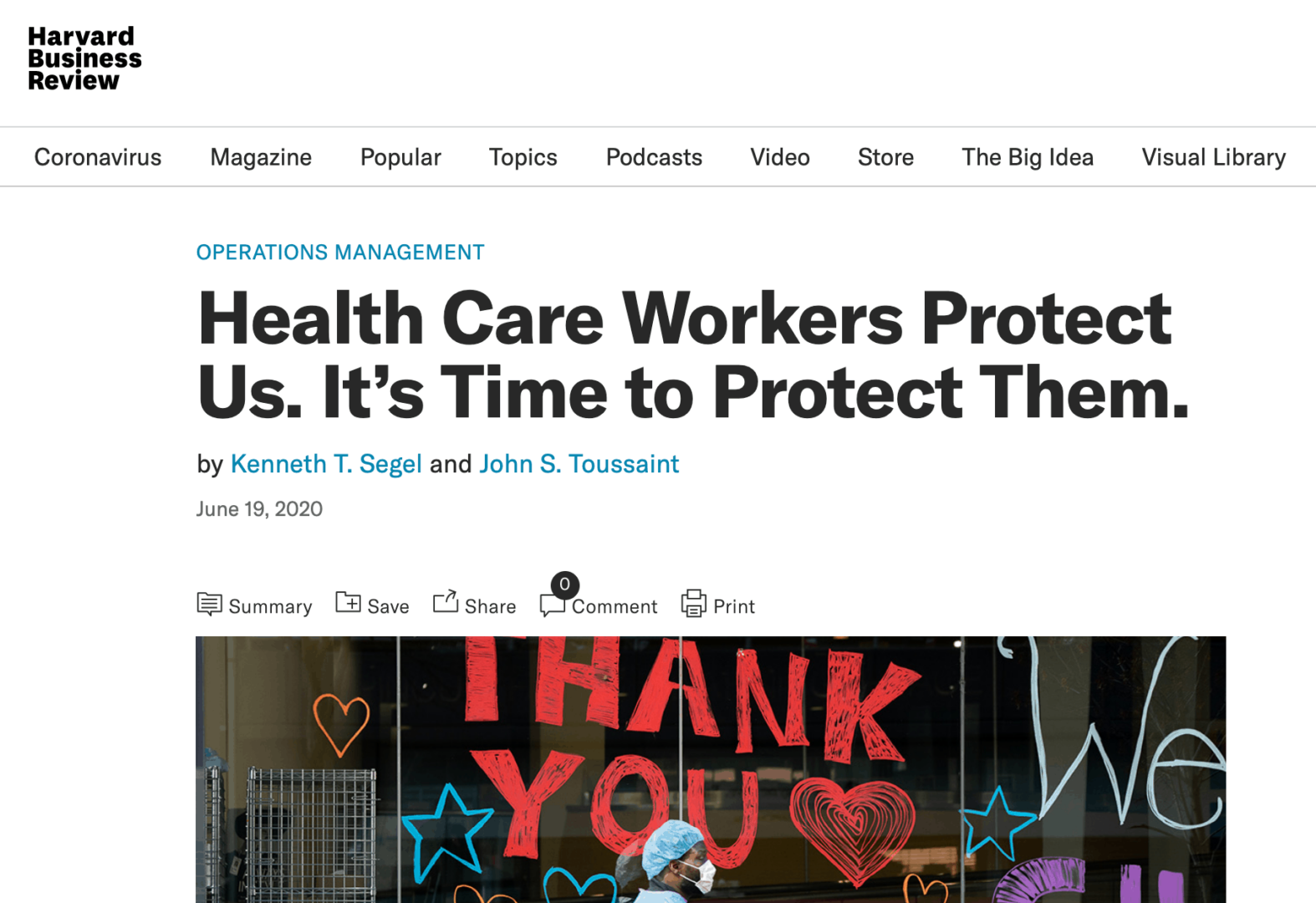Today, I wanted to share an excellent article written by Dr. John Toussaint (of Catalysis) and Ken Segel (of Value Capture):

Ken and John were both deeply influenced by the late Paul O'Neill, who made worker safety the primary imperative at Alcoa when he was CEO there — which created a culture of “Habitual Excellence” that led to business success (and a soaring stock price). Read an article about this.
Hear Mark read this post — subscribe to Lean Blog Audio
Here is video of Mr. O'Neill talking about safety. Bill O'Rourke, who appears in the video, was recently my guest on the “Habitual Excellence” podcast that's presented by Value Capture.
From the HBR article by Toussaint and Segel, it begins:
“Before Covid-19 pandemic struck, the U.S. health care industry suffered more than 550,000 work-related injuries and illnesses per year, or 150,000 more than any other industry in the country. Therefore, it is no surprise that health care workers have been harmed at tragic rates during the Covid-19 pandemic. According to the U.S. Centers for Disease Control and Prevention (CDC), as of June 4, 72,346 U.S. health care workers had been infected, a figure it acknowledges is an undercount. A comprehensive national analysis indicates that almost 600 health care workers have died.”
And they make this powerful point:
“Every instance of a health care worker being harmed on the job is preventable. Every single one.”
The article talks about how you do that:
1. Set a goal of zero workplace injuries and illnesses.
2. Make staff safety a fundamental value that you won't compromise for other organizational priorities.
3. Establish processes to make staff safety transparent and to learn from every safety incident.
4. Create an organization-wide daily huddle system to identify and solve problems quickly.
5. Don't use frontline caregiver heroism as an excuse not to act.
See the article for more detail and for examples of healthcare organizations that do their best to follow this approach. I'm proud to partner with Value Capture in this important and meaningful work.
What do you think of the approach laid out by Segel and Toussaint? Is your organization following that playbook? Could your organization do this?
Disclosure: I am a faculty member for Catalysis and I sometimes work as a consultant through Value Capture.
What do you think? Please scroll down (or click) to post a comment. Or please share the post with your thoughts on LinkedIn – and follow me or connect with me there.
Did you like this post? Make sure you don't miss a post or podcast — Subscribe to get notified about posts via email daily or weekly.
Check out my latest book, The Mistakes That Make Us: Cultivating a Culture of Learning and Innovation:









